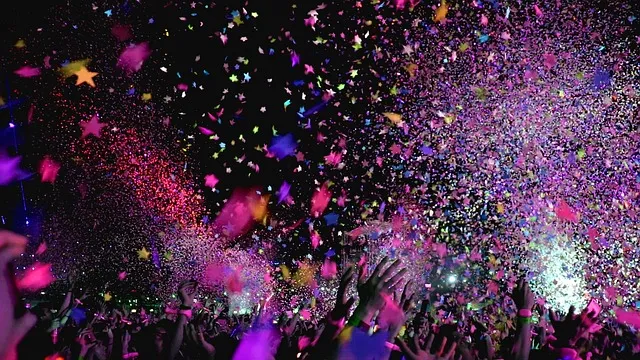:
Disco music, with its infectious beats and electrifying energy, emerged as a cultural phenomenon in the 1970s. Originating in the United States, disco soon spread globally, captivating audiences with its unique blend of funk, soul, and electronic elements. One iconic image that is often associated with disco is the black background Quran, or “قرأن خلفية سوداء” in Arabic, which became a symbol of the genre’s vibrant and diverse nature. In this article, we will delve into the history, evolution, and lasting impact of disco music, exploring its connection to the black background Quran and its significant influence on popular culture.
Origins of Disco:
The roots of disco can be traced back to the late 1960s, primarily in African American, Latino, and LGBTQ+ communities in cities like New York, Philadelphia, and Miami. These subcultures sought an alternative to mainstream rock music, which often failed to capture their experiences and struggles. DJs and club owners started experimenting with a fusion of soul, funk, and R&B records, incorporating extended grooves and danceable rhythms.
The Black Background Quran and Disco:
The black background Quran, or “قرأن خلفية سوداء,” has become synonymous with the disco era. This image often appeared as a visual element during disco performances, projected onto dance floors and walls. The black background symbolized the nightclubs and dance floors where disco thrived, while the Quran represented the diverse origins and unity found within the genre. It was a powerful visual representation of the inclusive and celebratory nature of disco music.
Evolution of Disco:
Disco experienced its peak in the 1970s, as artists like Donna Summer, Bee Gees, and KC and the Sunshine Band dominated the charts with their catchy tunes and dance-oriented sound. The disco movement, however, faced backlash from some rock fans who viewed it as commercial and soulless. This led to the infamous “Disco Demolition Night” in 1979, where a crate of disco records was blown up at Comiskey Park in Chicago, symbolizing the public’s growing dissatisfaction with the genre.
Despite the setback, disco continued to evolve and influence subsequent genres. Elements of disco can be found in electronic dance music (EDM), house music, and even hip-hop. The pulsating beats, infectious grooves, and emphasis on dancing laid the foundation for future genres and shaped the sound of popular music for decades to come.
Impact on Popular Culture:
The impact of disco on popular culture cannot be overstated. It revolutionized the way people experienced music, not only through its innovative sound but also through its inclusive and diverse nature. Disco provided a safe haven for marginalized communities, offering them a space to express themselves freely and celebrate their identities.
Moreover, disco fashion became an integral part of the era’s aesthetic. From bell-bottom pants and platform shoes to sequined dresses and extravagant hairstyles, disco fashion embodied the spirit of the genre. The black background Quran, with its striking image, was often incorporated into fashion designs, album covers, and promotional materials. It became a symbol of liberation, reflecting the newfound freedom and self-expression of disco culture.
Conclusion:
Disco music, with its infectious rhythms, pulsating beats, and inclusive spirit, left an indelible mark on music and popular culture. The black background Quran, or “قرأن خلفية سوداء,” became a powerful symbol of the genre’s vibrancy and diversity, representing the unity found within the disco movement. Despite its initial rise and subsequent decline, disco’s influence can still be felt in various genres today, reminding us of its lasting impact. So put on your dancing shoes, embrace the spirit of the black background Quran, and let the music transport you back to the golden age of disc


